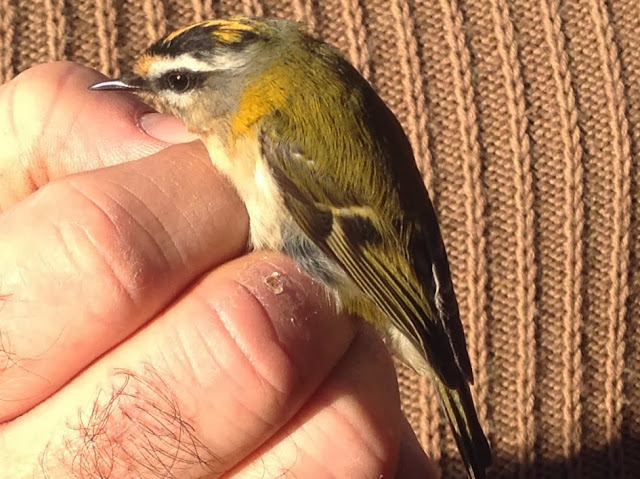Weather E/NE-3. Cool and overcast
A dull day and a cool easterly made birding difficult today. 12 Pink footed Geese moved over mid morning as did Jay (1) and Great spotted Woodpecker (1). A Golden Plover was heard but not seen and a small wintering Lapwing flock were on the beach at the Lighthouse.
Passerines on the move were limited, but Skylark (7), Grey Wagtail (1) and Meadow Pipit 23 were noted as were 4 Bullfinch in Lingham Lane.
Migrants remaining from yesterday were Chiffichaff (2) and Blackcap (1) all being hard to 'dig out' on a cool dank day.
The Linnet flock remains in the horse paddocks albeit quite mobile. It is only a matter of time before something unusual joins this wintering flock.
A SNOW BUNTING was reported on the shore somewhere between the Gun Site and New Brighton.
 |
| Quiet and secretive amongst the Blackberries. |
 |
| The mobile Linnet flock is always worth checking through. |


.bmp)


.bmp)

















